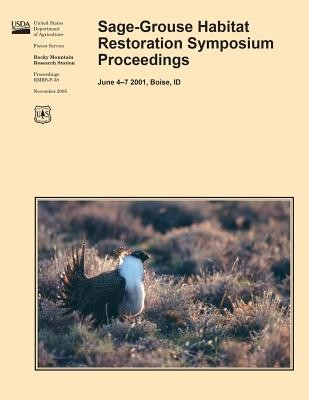
- We will send in 10–14 business days.
- Author: United States Department of Agriculture
- Publisher: CreateSpace Independent Publishing Platform
- Year: 2015
- Pages: 140
- ISBN-10: 1511517557
- ISBN-13: 9781511517553
- Format: 21.6 x 28 x 0.8 cm, softcover
- Language: English
- SAVE -10% with code: EXTRA
Sage-Grouse Habitat Restoration Symposium Proceedings (e-book) (used book) | bookbook.eu
Reviews
Description
Declines in habitat of greater sage-grouse and Gunnison sage-grouse across the western United States are related to degradation, loss, and fragmentation of sagebrush ecosystems resulting from development of agricultural lands, grazing practices, changes in wildfire regimes, increased spread of invasive species, gas and oil development, and other human impacts. These losses are focusing management efforts on passive and active approaches to maintaining and restoring sagebrush rangelands. This series of 14 papers summarizes current knowledge and research gaps in sagebrush taxonomy and ecology, seasonal sage-grouse habitat requirements, approaches to community and landscape restoration, and currently available plant materials and revegetation technology to provide a basis for designing and implementing effective management prescriptions.
EXTRA 10 % discount with code: EXTRA
The promotion ends in 18d.13:21:47
The discount code is valid when purchasing from 10 €. Discounts do not stack.
- Author: United States Department of Agriculture
- Publisher: CreateSpace Independent Publishing Platform
- Year: 2015
- Pages: 140
- ISBN-10: 1511517557
- ISBN-13: 9781511517553
- Format: 21.6 x 28 x 0.8 cm, softcover
- Language: English English
Declines in habitat of greater sage-grouse and Gunnison sage-grouse across the western United States are related to degradation, loss, and fragmentation of sagebrush ecosystems resulting from development of agricultural lands, grazing practices, changes in wildfire regimes, increased spread of invasive species, gas and oil development, and other human impacts. These losses are focusing management efforts on passive and active approaches to maintaining and restoring sagebrush rangelands. This series of 14 papers summarizes current knowledge and research gaps in sagebrush taxonomy and ecology, seasonal sage-grouse habitat requirements, approaches to community and landscape restoration, and currently available plant materials and revegetation technology to provide a basis for designing and implementing effective management prescriptions.


Reviews